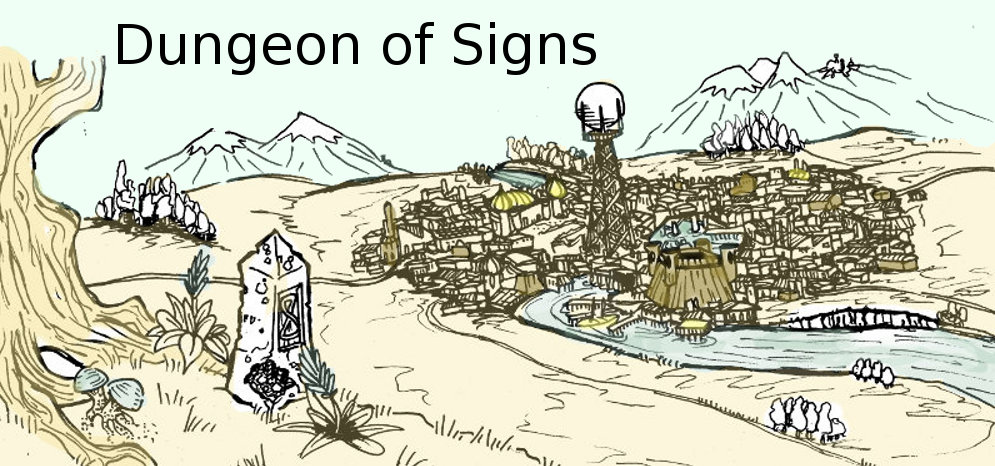SETTING RULES
FOR FALLEN EMPIRE
Thinking about settings and the generic assumptions of fantasy games and where I want to place "Fallen Empire", my current online game, within those constraints made me realize I need more than just a vaguer sense, I need some ‘rules’ or ‘truths’ about how the setting works at a high or conceptual level. I visualize the setting as my version of 'vanilla' fantasy, a sprawling world of jumbled faux-medieval, classical and renaissance bits where dragons and unicorns exist (likely in a twisted form - but still there). In order to make the setting consistent I want to create some core ideas, and I want them to be interesting, ideally running against some of my least favorite fantasy archetypes.
This is complicated by a couple of factors, first I abhor vanilla fantasy settings, and second classic settings are already ably represented by numerous products, many of them far, far slicker then anything I could ever deliver. Consequently I want a setting that is high fantasy, but not derived from Tolkien, Greyhawk and The film Excalibur. Even dispensing with the obvious influences, high fantasy settings come with their own problems – principally really high fantasy is sprawling, better suited for heroic games of conflict between great forces with players acting to pursue world changing adventure. The titanic conflict between forces of good and evil, order and chaos don't really work well with the rule sets I like, which are at their best providing when a game is about exploration and trickery and picaresque adventure for personal gain. An open world is therefore essential, with room for the players to scheme and explore but there is very little open world left in many high fantasy settings. High fantasy games of great empires, kingdoms and might wizards logically leave very little of the map to explore – there problems aren’t on a human scale, they are epic: ancient evil awakening, barbarian invasions from the realm of nightmare or conflicts between stately pantheons of deities. OD&D doesn’t really support that sort of game, and while running a version of Journey to the West about reformed demons and pagan gods fighting back against the bureaucracy of heaven and sometimes on behalf of an upstart populist religion has an appeal – it’s not the game I want to run right now.
I find having high level setting truisms helpful keeping my setting and adventure design focused, for creating expectations and building a sense of how the game should works. One traditional way of doing this is to focus on a monster manual for the setting - what are the common creatures encountered? A world where goblins are on every random encounter table is radically different than one where dragons are. An abundance of either implies something about both the world and the goblins or dragons involved. I want to do this for fallen empire - define its singular monsters (I’ve been doing this in my Monster Archeology posts), but more I want to create a few other ‘truths’ that define the setting. While it's likely these setting constraints will grow and change in play, it seems useful to set up specific guidelines for everything I produce for Fallen Empire so that it has a distinct look and feel.
While a good chunk of that look and feel is purloined art from Roger Dean and other 70’s/80’s progressive rock album cover artists, I want that to be a bit more than an aesthetic draped over a standard D&D game.
 |
| Rodney Matthews (Not Roger Dean) - so smooth |
